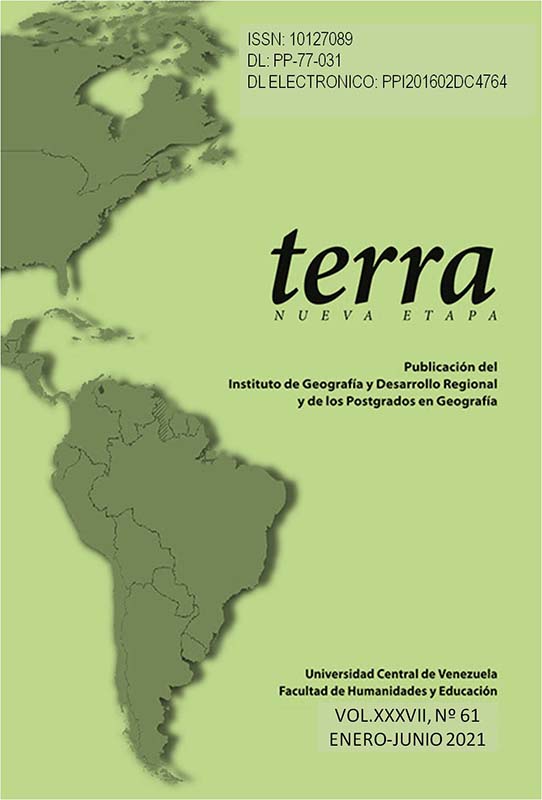EVALUACIÓN DE INDICADORES DE ORDENACIÓN DEL TERRITORIO PROPUESTOS POR LA FAO Y SU APLICABILIDAD EN EL PLAN DE ORDENACION DEL TERRITORIO DEL ESTADO GUÁRICO
Palabras clave:
Ordenamiento territorial, indicadores de gestión, planes de ordenación del territorio, Land use planning, management indicators, land use planning plansResumen
A pesar del desarrollo en ordenamiento territorial que alcanzó Venezuela en las décadas de los años 1980 y 1990, cuando el entonces denominado Ministerio del Ambiente y los Recursos Naturales Renovables (MARNR), elaboró los planes estadales de ordenación del territorio de casi todos los estados. Se puede señalar que, no existió un desarrollo equivalente en lo que respecta al seguimiento de la gestión de estos. En aras de contribuir a llenar ese vacío y abrir camino a nuevas investigaciones, se seleccionaron los indicadores de ordenación del territorio propuestos por la Organización de las Naciones Unidas para la Alimentación y la Agricultura (FAO, por sus siglas en inglés: Food and Agriculture Organization), en su programa Plataforma de Territorios Inteligentes (PTI) del año 2020. Con el objetivo de conocer su grado de implementación en la evaluación de la gestión del Plan de Ordenación del Territorio del estado Guárico (1990 – 2010) elaborado por el MARNR en el año 1987. Se analizaron un total de 54 indicadores que contempla el proyecto PTI, de los cuales serían “aplicables” al Plan de Ordenación del Territorio (POT) del estado Guárico aproximadamente el 40 %, no pudiendo aplicarse aproximadamente el restante 60 %. Entre las principales razones por las que no pueden aplicarse la mayoría de los indicadores propuestos destacan: que sus temáticas corresponden al nivel local, es decir, razones de escala, a que tratan materias distintas a las que contempla el plan de Guárico y a la calidad y disponibilidad de la información necesaria para su aplicación.
ABSTRACT
Despite the development of land use planning that the country reached in the 1980s and 1990s, when the then-called Ministry of the Environment and Renewable Natural Resources (MARNR) drew up the state plans for land use planning for almost all the states. It can be pointed out that there was no equivalent development in terms of monitoring the management of these. In order to help fill this gap and open the way to new research, the spatial planning indicators proposed by the Food and Agriculture Organization of the United Nations (FAO, for its acronym in English: Food and Agriculture Organization) were selected. ), in its Intelligent Territories Platform (PTI) program for the year 2020, with the aim of knowing its degree of implementation in the evaluation of the management of the Guárico State Land Management Plan (1990 - 2010) prepared by the MARNR in in 1987. A total of 54 (fifty-four) indicators contemplated by the PTI project were analyzed, of which approximately 40% would be “applicable” to the Territorial Organization Plan (POT) of the Guárico state, and approximately 40% cannot be applied. the remaining 60%. Among the main reasons why most of the proposed indicators cannot be applied, the following stand out: that their themes correspond to the local level, that is, reasons of scale, that they deal with matters other than those contemplated in the Guárico plan and the quality and availability of the information necessary for your application.

